Dusty Nelson interview: Sakura Killers and White Phantom
Our latest delve into the world of ninja movies, as we chat to Dusty Nelson about Sakura Killers and White Phantom...
1987 was a big year for ninja fans. Having kicked off in the early 80s with movies like Enter The Ninja and The Octagon, the Ninja Boom hit its stride half way through the decade with literally hundreds of films, books, computer games revolving around the mysterious hooded killers. If you were a kid in this era, ninjas were the coolest thing. They were magical beings who dealt out the kind of forbidden ultraviolence that would send your teachers pale with shock.
By 1987, you could sell just about anything with “ninja” in the title and turn a profit but a lot of product just had the word “ninja” tacked on to it and contained no actual ninjing. As a young ninjologist seeking thrills, it was was easy to fall into these traps and rent false ninja tapes or repackaged games like Ninja Scooter Simulator. However, two films from the busy 1987 roster stood out from the crowd and delivered the ninjasms – Sakura Killers and White Phantom.
Both films feature a grizzled old American called The Colonel (played by Chuck Connors in Sakura Killers and Bo Svenson in White Phantom) who sends his agents out to Taiwan to do battle with the treacherous Sakura Organisation, a crime family run by ninjas. In Sakura Killers, the agents, Dennis and Sonny, are a pair of American chuckleheads who train to become ninjas themselves. In the second, a mysterious stranger, already versed in the ways of ninjutsu, helps out. While all roads lead to ninja mayhem, the movies are tonally far apart. Sakura Killers is action-packed and explosive, whereas White Phantom takes a slower, more philosophical approach. They work surprisingly well as a pair; Ninj and Yang.
While both were huge rental successes at the time on video and warmly remembered by those who saw them, they’ve faded into obscurity over time. Neither have had official DVD releases and their production is shrouded in the type of ninja mystery that is wholly appropriate. No one is entirely sure who made Sakura Killers. Hong Kong legend Jimmy Wang Yu (of Man From Hong Kong fame) is rumoured to have been responsible for some of it. IMDB co-credits him and Dusty Nelson, an American filmmaker with only a few low-budget features to his name. However, Nelson takes sole credit on White Phantom, so I tracked him down – ninja-style – and tried to lift the hood on these much-loved action favourites.
Read on for a story of life in the bizarre world of 80s low budget filmmaking, featuring Taiwanese street gangs, George A. Romero, a ninja film with Godard as its principle influence, and a little bit of ninja magic…
Hi Dusty, thank you for taking the time to talk to me today, I really appreciate it.
Well, thank you for being interested in these very old movies.
I have to admit, I can’t find a single thing online where you’ve talked about these movies anywhere else.
No, I’ve never talked about these movies. except in drunken conversation with friends.
Okay, well let’s start with some history. I take it Sakura Killers was made first?
Yeah. Understand, I was this filmmaker who lived in Pittsburgh, Pennsylvania and I thought “okay, I wanna move to Hollywood and see if I can make it out there”. What you did in those days is you put together a sample of your work on 16mm film and you carried around a reel and you took it in and you showed it to people.
There was a company in Hollywood called Overseas Film Group, the head of which was a man named Robbie Little. He took small films and found markets for them. I have no idea how he got involved with Sakura Killers but I walked into his office one day and said “here’s my work!” I’d directed a film in Pittsburgh called Effects which again is a “fourteen people in the world know it” film [although this recently got a Blu-Ray release via the American Genre Film Archive], but we made it for essentially nothing so he said “will you come in and edit Sakura Killers?” They had a bunch of footage and they were like “we’ll pay you five dollars, will you work?” and I was “sure sure”, just so I could buy some brown rice and lettuce!
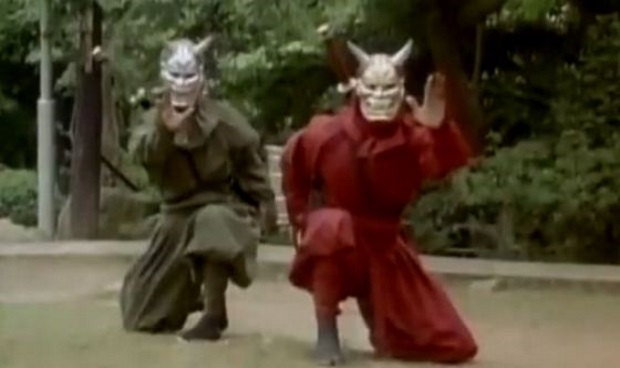
So how much footage was there already?
I’m gonna guess that they had maybe 70% of it already. It’s a lotta years ago and I’m old now…
Do you know where it came from? How come they had a mostly finished film?
I think it was Robbie’s cousin, Roy McAree. He had some contacts in Taiwan and there was lots of production happening in Taiwan and Hong Kong and I can’t remember where the footage came from but I think it came from both those places.
There’s a rumour online that Wang Yu directed the Taiwanese footage from Sakura Killers. Do you know if that’s true?
It is conceivable and I wish I knew more about it but I don’t. The only person who I know that would know is Robbie and, sadly, he passed away a few months ago. Frankly, even at the time, it was one of those things where it was like “we have this stuff”…
Well, you’ve gotta have a little bit of ninja mystery surrounding these things!
[Laughs] Yeah. I mean, most of what I did on Sakura Killers was edit. I made a story out of it. There wasn’t much of a story, which was why I got hired, to somehow cut a story together from a bunch of footage. I don’t think I knew that when I was hired and I never asked for any credit.
It’s credited to Richard Ward, which I guess is a collective pseudonym?
Yes.
So it was a bit like the cut and paste ninja films, where footage was just spliced together from multiple sources to make a saleable final product?
Yeah, all of those things happened. I was a very naive young man and they needed people who had some skills to come in and work with them. So I sat down and worked hard on the thing and they said “right, we need to shoot some stuff to augment what we have” and I ended up directing that because they were already paying me to edit it. And it wasn’t like they were gonna pay me more! It was Hollywood. You grab what you can.
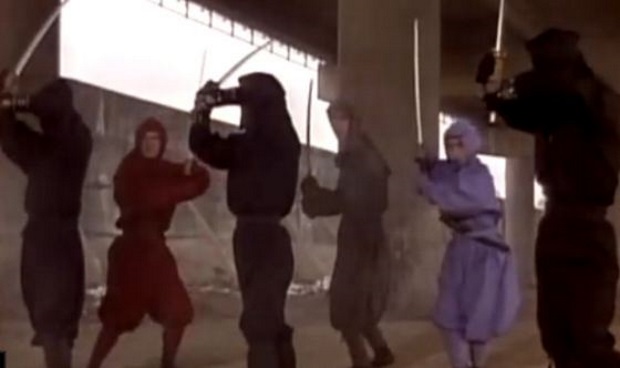
So the new footage you directed for Sakura Killers, did you write that as well?
I have a feeling that they sat around and all said “we need something like this… Dusty, you write it!” and that’s how it was done. I’d write stuff and show it to them – they were producing – and we’d agree or not agree. So much of it was based on some way that it would fit within the story but also “we wanna shoot it for $40 so make sure the scene doesn’t have anything in it that’s gonna cost more than that”. [laughs] It sounds cynical but it’s the way low budget films are done.
Did you shoot the footage with Chuck Connors as the Colonel?
I don’t think I did, no. I think I’d probably remember that. I’m not sure where that was shot. I know we took Bo Svenson to Taiwan [to play the Colonel] in White Phantom so it’s conceivable that Sakura Killers was done the same way.
Okay, so White Phantom then…
On the strength of Sakura Killers, they said “okay, we’re gonna make a movie in Taiwan – are you interested?” so we discussed ideas and what could it be. They had maybe $200,000 – $250,000…
White Phantom is similar to Sakura Killers in some ways in that they both feature the Colonel and the Sakura Organisation… Did you purposely envision it to be a sequel?
I think they did, yeah, so the bad guys had to be the Sakura Organisation.
Cool. They work well as companion pieces as they’re kind of tonal opposites. So tell me about White Phantom’s story, how did you write it?
Well, when I rewatched it a couple of days ago, I realised that somehow I turned a ninja movie into a Godard film! [laughs]
But no. I thought about that thing at the beginning, this ninja dressed as an old man, limping down the road, and then at the end he walks away and I think that was really what we talked about, that ninjas are kind of magic. We really wanted to get at how ninjas are not only about fighting but that there is this myth around them. Even the title – to have a white ninja, I mean, ninjas are always traditionally dressed in black…
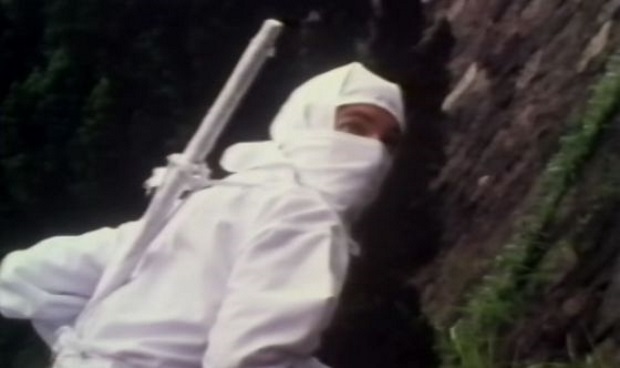
Yeah, the camouflage isn’t the best when it’s white…
Hmm, no. But the whole point of it was that this guy, this ninja, was magical and out of the ordinary and different. And that was what everybody bought into, to try and make something that really was outside the norm from a ninja point of view.
The movie stands out as different, for sure. It’s also the only time I’ve seen a ninja striptease…
[laughs] Oh man. That thing. I have no idea. I think what we were playing with there – strictly from a narrative point of view – was how much martial arts is like dance. So it seemed to make sense. Now there’s obviously a totally sort of male and sexist point of view but it was 1987 and we were males who were sexist. [laughs] I’m not trying to excuse it…
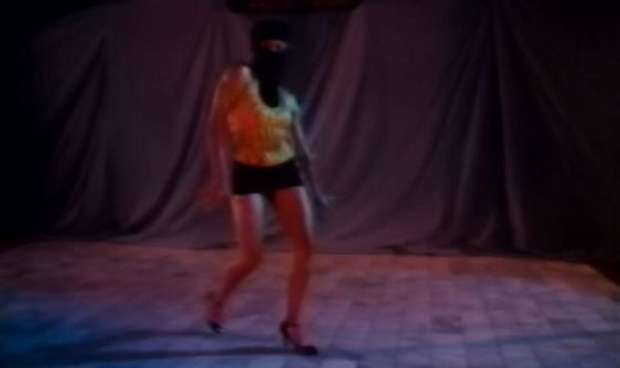
It’s quite tasteful, all things considered. I mean, there’s no actual nudity…
Well, no. And Page Leong is actually an incredibly well-trained dancer. That dance she does is really pretty good! And you’re right, we knew we were gonna keep it tasteful and it wasn’t gonna be real sleazy but conceptually that’s what we were playing with, that martial arts and dance were very similar. Of course, there are some very dramatic moments we got out of that too. There is actually romance. I mean, that scene where she’s killed in the bar while she’s dancing, and he goes off and pines for her. I don’t think that kind of emotion is generally played in these kinds of films.
Did you watch many ninja movies to get into it or did you just go “no, this is my story, I’m going to keep it pure and untainted”?
I did not watch many, no. I had studied Tai Chi and Taekwondo… Please don’t misunderstand. I would never consider myself a martial artist, but I had some really good teachers and so I got a sense of what it meant beyond the physical. Culturally. I did a lot of reading because I was curious about it and I was interested in things like Zen Buddhism. All of that tied in together for me – again, I’m not a Zen Buddhist, but I was interested. When I thought about how this man, this ninja, would walk through the world, those were all things that we talked about a lot. Even in the scene where he goes into the bookstore and asks for the I Ching, that was all very deliberate. He coulda asked for anything! But there was whole notion of a book of change and how that works.
This might be the reason, unfortunately, that it’s a little slow. We were somehow trying to balance some real sorta narrative depth… Ah, even saying that I feel incredibly presumptuous! I was teasing before about a ninja film that was a Godard film, but those were the films that I watched when I was starting to make films. It was almost always French new wave and Bergman and all those kinds of things.
Were you involved in the casting of White Phantom?
Sure. I mean, not the stunt guys in Taiwan, but I was very involved in the casting in Hollywood. First of all, Jay Roberts, who is a good martial artist and did all of that stuff himself. It was clear from the producers that we had to find someone who could act but also fight. Same with Page Leong, who was an actress and a dancer. Those were the two people we brought from America, along with Bo Svenson. I had nothing to do with getting him though. I was just told “we have this guy and he has a name and he’s gonna be there” and I think we had him for 3 days at the most.
I love Jay’s drunken style fighting, where he’s doing that whole Jackie Chan style comedy thing. It’s pretty impressive choreography. Was that his own?
You know, we had a fight choreographer from Hong Kong called Jimmy Lee – he actually played the bad guy – and he spoke English and none of the other stunt guys did. I was told all the younger stunt guys – the Sakura guys who are jumping around and falling out of things – were gang kids. They were from Taiwan and they were unbelievable. They would do anything. They didn’t care! I’d worked with stunt folks in L.A. and there was a real thing for safety but in Taiwan, with these guys it was like “You want me to slip outta here and fall 3 storeys and land? Fine!”… “Don’t you want a…?”… “Huh, what!?” [mimics thud sound] They were so great to work with.
I would talk to Jimmy about the choreography. After about the second day, I realised they knew exactly what they were doing and how they were gonna do it and all I needed to figure out was where to put the camera. They had their way of doing things and they worked really well with Jay and everybody got along great. All of those parts about making the film – the stunts and fighting – were just really fun.
One night, they said “hey we wanna take you out, we’ll take you to this really cool place for dinner and after that, we’ll have some fun, we’ll go to some clubs and whatever” and Jimmy translated all of this and I was nodding and smiling and then Jimmy said, “I wanna talk to you” and he took me aside and said “NO. You do not wanna go out with these guys, you will end up in jail. You will be dead or in jail. So no.” [laughs] They were gang kids…
The real life Sakuras!
Oh, they really were. But they worked hard. They would do stuff as often as we needed. It was a really interesting experience going as a westerner to a part of Taiwan that was properly Chinese. In fact, Fukienese which is the native Taiwanese.
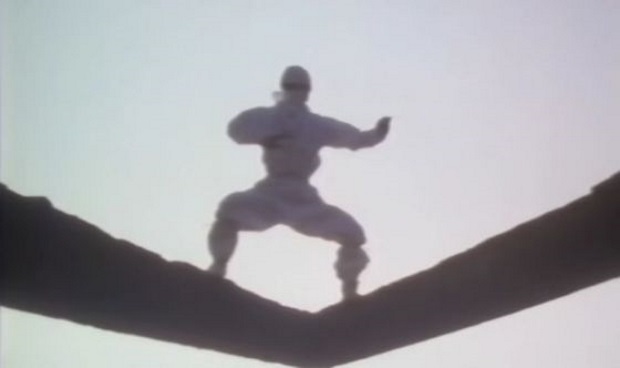
Did you choose the locations or did you have a scout?
There was a scout and I told them what I’d like. I would talk to them about what I thought about the locations because I realised one of the ways we could make the movie more interesting was to have more interesting locations and they took us to a couple of temples that were amazing. I mean, literally, no white people had ever been there and it was absolutely remarkable, some of the locations up in the hills. One is the final fight scene – that place was amazing!
All the temples look awesome in the movie.
Yeah, and we just kinda ran in there and shot with available light. Alan Brennecke the cinematographer and I had worked together in Pittsburgh on public television so you learn how to use light. We had maybe one light and a bounce card so we could go into these places without causing them a lot of grief and they’d allow us to shoot.
Again, the experience of being there – the cultural experience – and seeing so much of these temples that had been there for God knows how long, it was really remarkable. All they asked was that we be careful, which of course we would be.
Were you responsible for the music? On either film? They have such great scores.
Yes, some of the same people were on both films. I worked pretty closely with the musical guys and we had a great time. There’s a great song in White Phantom, when she’s getting killed, that’s sung by a friend of mine called Toni Zeto. That song was written specifically for that scene.
I love how at the end of White Phantom the dramatic synth fades into the harmonica motif again as he plunges in the sword…
I played all the harmonica parts! [laughs] I’ve been a very bad blues harmonica player for a lot of years but those were all improvisational parts. As long as I don’t have to learn a song I’m fine! I just taught Jay what to do with his hands and then I played stuff that sort of mimicked what was going on with the hand movements. That made me laugh a lot when I saw it again the other day.
You never got tempted to make another ninja film?
I never got asked! I probably would’ve enjoyed it if I had. I didn’t enjoy the horror stuff I did later. Effects is more like a Hitchcock film than a horror film, but because I’d worked with a guy in Pittsburgh called George Romero who’d done Night Of The Living Dead…
Um… wait… that’s kind of a big thing to just drop in like that. How did you work with George Romero?
My partner and I – a guy called John Harrison – we went to a masters programme at Carnegie University in Pittsburgh and when we got outta there, we started a small production company to make local TV commercials and industrials and so on. Because we were working at WQED, we had access to 16mm equipment so I would write some goofy thing and we’d go out and make a short.
We went to see George. We knew who he was and he was always very open to young filmmakers. He loved the stuff we were doing but, more to the point, he loved that we were out there and doing it. That’s the kind of guy he was – “If you wanna be a filmmaker, make films! Don’t ask me how, just make a movie!” – and I think he was impressed so he hired us any time he could to do stuff, and he was very helpful when we made Effects. He loaned us equipment, helped us with sound transfer, he couldn’t have been nicer. He was a mentor. When I got out to Hollywood, it was the same attitude I took with the stuff I did like White Phantom.
Anyway, I think what happened is I fell into some work where I was actually getting paid money – commercials – and I started doing that. It became harder and harder to say “okay, I just wanna go and make a low budget film” and the worlds in Hollywood are really divided up. If you’re working in the commercial world, you’re no longer in the low budget industry and you lose touch.
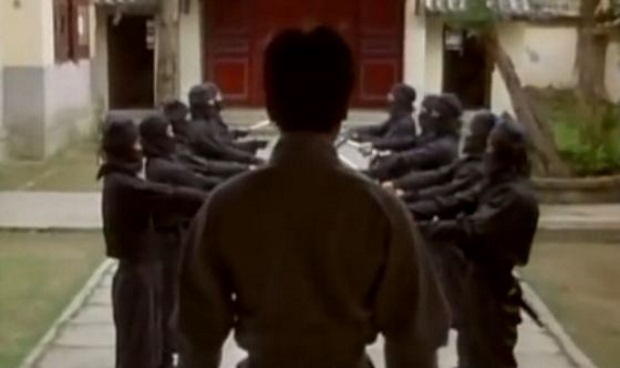
That’s a shame. I mean, there’s definitely a cult following for Sakura Killers and White Phantom.
You know, I have a son now who’s about to turn 27 and I was visiting him a month or so ago and we were all sitting around with some of his friends. They were asking me about movies and I mentioned White Phantom and he said that he and his friends when they were young, like 10 or 11, it was their favourite movie and they’d put it on and watch it again and again and I never knew that. I mean, we all do things as kids that we never tell our parents but it just knocked me out and made me grin. I was like “that’s cool”.
Aw, that’s a lovely note to end on. Thanks so much for talking to us about these great old movies!
You can read more about ninja movies on my ninja blog, Ninjas All The Way Down!